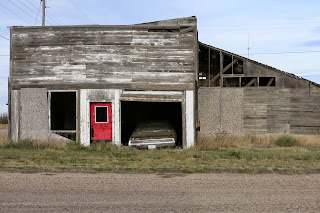So many services of Lessons and Carols.
Last Saturday we sang in the Lutheran Church in Arnhem, an inner city church
where quite a lot is done for the homeless, for refugees and for drug addicts.
It is a big church and it was freezing cold inside, at least in the room where
we had to robe, and in the corridors. The church wasn’t too bad, and they tried
to warm us with hot coffee, nice rolls and fruit. The church is unusual with
choir stalls in a semicircle against the back of the church. However, because
there was a rather ugly stable in the process of construction, waiting for the
ox and ass, Mary and Joseph and baby Jesus, the stalls were obscured and couldn’t
be used, so we sat rather exposed on chairs in front of the congregation. There
is a new organ, placed in the nave in front of the old organ which is still up on
the gallery, lurking in the dark shadows. It looked a bit odd to me. Is it too
expensive to remove the old organ?
Arnhem, The new organ. You can just get a glimpse of the old one up on the gallery
Rheden last night was totally different. We sang in the old
village church, warm and friendly. Our choir was only small, but we and the
congregation really enjoyed the singing and the service. When I drove to
Rheden, the moon rose above the horizon, a big, full moon, orange, as if there
was a light shining inside, or a fire burning. At first I thought it was a hot
air balloon as it was so large! It looked rather magical, especially over the
river IJssel. After the service, later in the evening, the moon was higher in
the sky and therefore smaller and no longer coloured orange, but exactly over
the attractive church tower which was bathing in warm flood light.
Above: the village church of Rheden, exterior and interior, and the nice organ front.
CAROL SERVICE, RHEDEN, 18TH
DECEMBER 2013, 8 P.M.
* Once
in Royal David's City
verse 1 solo, verse 2, 3, 4, 6 (descant)
Bidding Prayer
* Adam
lay ybounden – Howard Skempton (choir, CfCV 2)
* Ding
dong merrily GCB 28
First Lesson
* Remember,
O thou man – Thomas Ravenscroft (choir, AfC 170)
* God
rest you merry, gentlemen GCB
29 + descant
1
all, 2 choir, 3 men, 4 ladies, 5 all
Second Lesson
* Creator
of the Stars of Night – Malcolm Archer (choir, AfC56)
Third Lesson
* O
little town of Bethlehem GCB 92 +
descant Hopper 10
Fourth lesson
* There
is no rose – Howard Skempton (choir, CfCV 192)
Fifth Lesson
* NEH 10
– Long ago, prophets knew
* Small
wonder the star – Paul Edwards (choir)
Sixth Lesson
* See
amid the winter’s snow CfCV 150
3
choir, 4 men, 5 ladies
* My
Lord has come – Will Todd (choir, CfCV 105)
Seventh Lesson
* The
First Nowell GCB 126 + descant,
vs 1, 2, 3, 5, 6
* In the bleak mid-winter – Harold Darke (choir)
Eighth Lesson
* We
three kings
* New
Year Carol – John Rutter (CfCV 108)
Ninth Lesson
* O come
all ye faithful GCB 88 +
descant Hopper 11
vs 1, 2, 6 + descant, 7 + descant
Prayers
Blessing
* Hark
the Herald Angels sing GCB 39 + Ledger
descant
+Kerst+Arnhem.JPG)
+Kerst.JPG)
+Kerst.JPG)
+Kerst.JPG)
+Kerst.JPG)
+Kerst.JPG)














.JPG)
.JPG)
.JPG)












